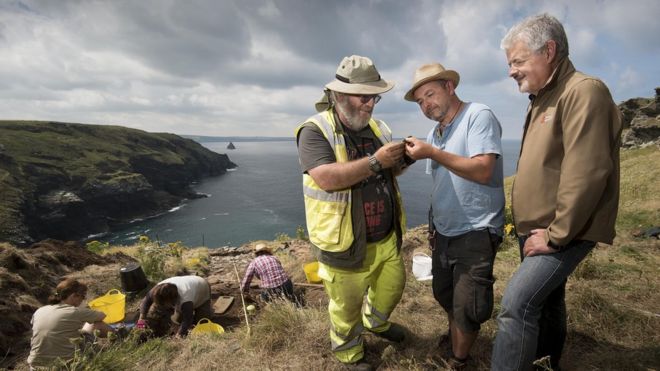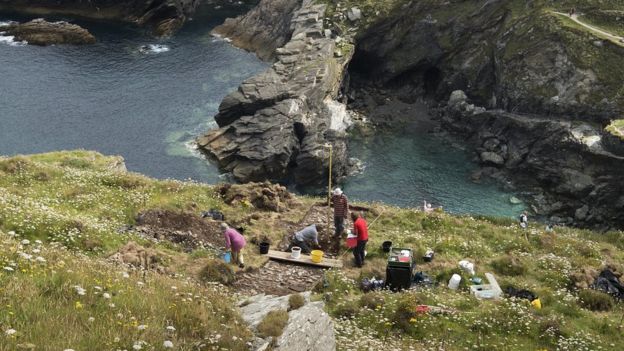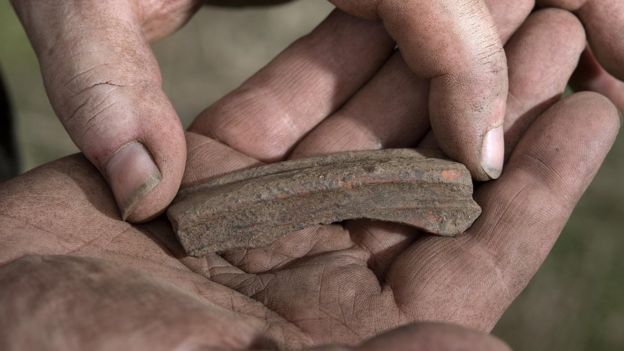C. IULII CAESARIS
tionem continebat timorisque opinionem, quibus-15 cumque poterat rebus, augebat.
The Gauls 58. Cum maiore in dies contemptione Indutio-
attacking are , . 1
crushed and marus ad castra accederet, nocte una intromissis
leader siam. eqUjt;bus omnium finitimarum civitatum, quos arcessendos curaverat, tanta diligentia omnes suos 5 custodiis intra castra continuit, ut nulla ratione ea res enuntiari aut ad Treveros perferri posset. Interim ex consuetudine cotidiana Indutiomarus ad castra accedit atque ibi magnam partem diei consumit; equites tela coniciunt et magna cum io contumelia verborum nostros ad pugnam evocant. Nullo ab nostris dato responso, ubi visum est, sub vesperum dispersi ac dissipati discedunt. Subito Labienus duabus portis omnem equitatum emittit; praecipit atque interdicit, proterritis hostibus atque 15 in fugam coniectis (quod fore, sicut accidit, vide-bat) unum omnes peterent Indutiomarum, neu quis quern prius vulneret, quam ilium interfectum viderit, quod mora reliquorum spatium nactum ilium effugere nolebat; magna proponit iis, qui 20 occiderint, praemia ; submittit cohortes equitibus subsidio. Comprobat hominis consilium fortuna, et cum unum omnes peterent, in ipso fluminis vado deprehensus Indutiomarus interficitur caputque eius refertur in castra ; redeuntes equites, quos possunt, 25 consectantur atque occidunt. Hac re cognita omnes Eburonum et Nerviorum, quae convenerant, copiae discedunt, pauloque habuit post id factum Caesar quietiorem Galliam.
C. JULIUS Caesar
of the belief of his fear, by which the 15-and whatever methods he could.
The Gauls 58. Cum maiore in dies contemptione Indutio-
attacking are , . 1
crushed and Marus up to the camp, been admitted in one night,
Leader the church. e q U j T ; bus of the neighboring states, which taken care to have sent for, with such great care that all his men within the camp by prisoners to a 5, so that he could by no means be reported or carried to the Treviri. In the meantime, according to his daily to the camp and spends a great part of the day; io his horse cast their weapons, and with very insulting language call out our men to battle. No reply being given by our men, when they thought proper, depart toward evening in a disorderly and scattered manner. , Labienus unexpectedly sends out all the cavalry by two gates; gives this command and prohibition, that, when the enemy, and 15 were put to flight (which he foresaw would happen, as it see-bat), they should all make for Indutiomarus that no one whom she had earlier slain, the slain man, than that he sees him, he did not want to escape him of gaining time by the delay over the rest; He offers great rewards to those who should kill him: 20, and the reward; sends troops to support the horse.The issue justifies the policy of the man, and when they all aimed at Indutiomarus is slain and his head was caught in the very ford of the river back to the camp; horse, when returning, all whom they can, 25, pursue and kill each other. This affair having been known, all of the Eburones and the Nervii, who had come together, the forces go away, and a little more tranquil it was after that that was the Caesar to Gaul.



